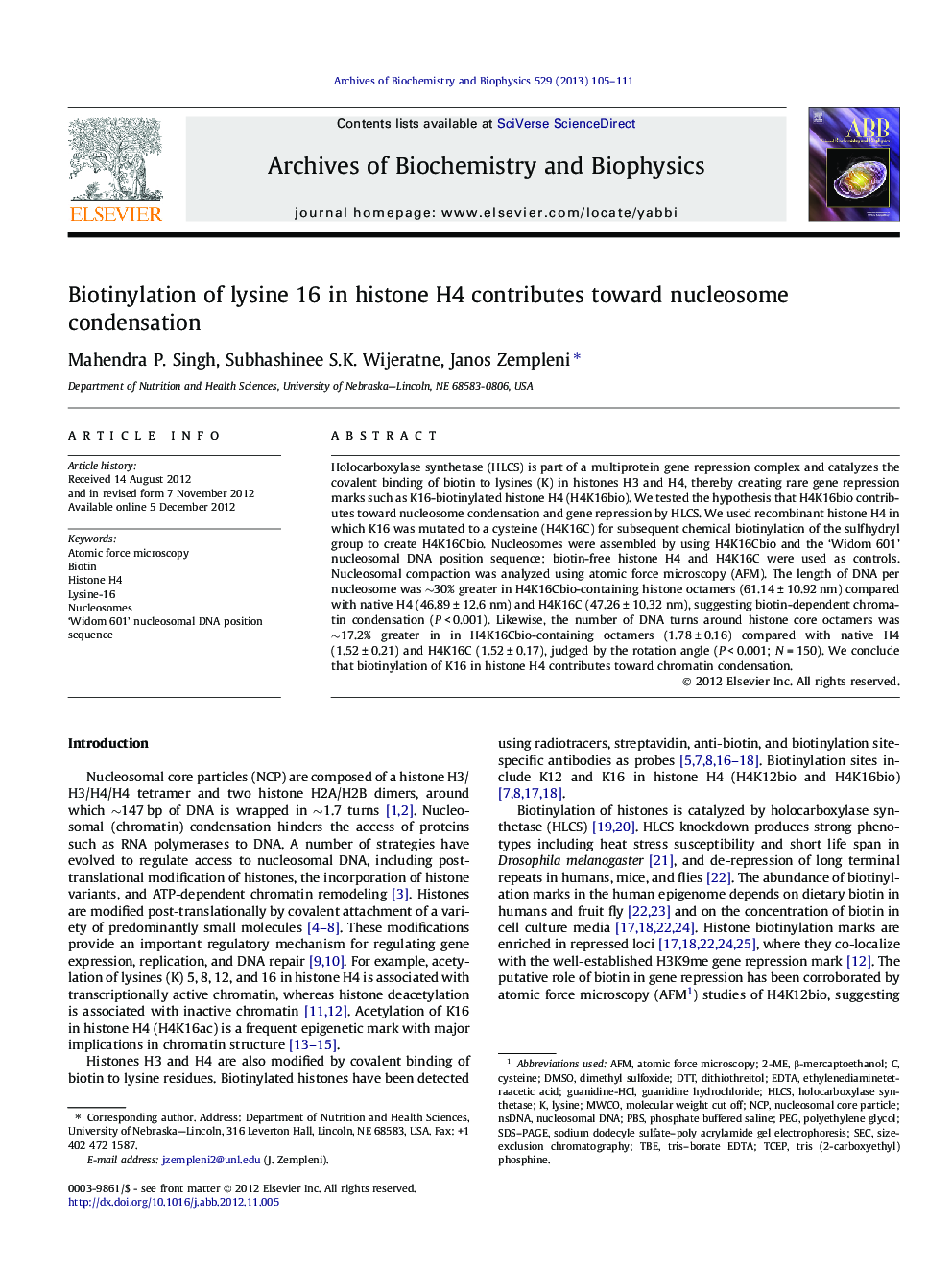| Article ID | Journal | Published Year | Pages | File Type |
|---|---|---|---|---|
| 1925427 | Archives of Biochemistry and Biophysics | 2013 | 7 Pages |
Holocarboxylase synthetase (HLCS) is part of a multiprotein gene repression complex and catalyzes the covalent binding of biotin to lysines (K) in histones H3 and H4, thereby creating rare gene repression marks such as K16-biotinylated histone H4 (H4K16bio). We tested the hypothesis that H4K16bio contributes toward nucleosome condensation and gene repression by HLCS. We used recombinant histone H4 in which K16 was mutated to a cysteine (H4K16C) for subsequent chemical biotinylation of the sulfhydryl group to create H4K16Cbio. Nucleosomes were assembled by using H4K16Cbio and the ‘Widom 601’ nucleosomal DNA position sequence; biotin-free histone H4 and H4K16C were used as controls. Nucleosomal compaction was analyzed using atomic force microscopy (AFM). The length of DNA per nucleosome was ∼30% greater in H4K16Cbio-containing histone octamers (61.14 ± 10.92 nm) compared with native H4 (46.89 ± 12.6 nm) and H4K16C (47.26 ± 10.32 nm), suggesting biotin-dependent chromatin condensation (P < 0.001). Likewise, the number of DNA turns around histone core octamers was ∼17.2% greater in in H4K16Cbio-containing octamers (1.78 ± 0.16) compared with native H4 (1.52 ± 0.21) and H4K16C (1.52 ± 0.17), judged by the rotation angle (P < 0.001; N = 150). We conclude that biotinylation of K16 in histone H4 contributes toward chromatin condensation.
► Biotinylation of K16 in histone H4 contributes toward nucleosome condensation. ► Effects of histone biotinylation are quantitatively minor. ► Mutagenesis plus AFM allow for quantifying histone modification effects.
